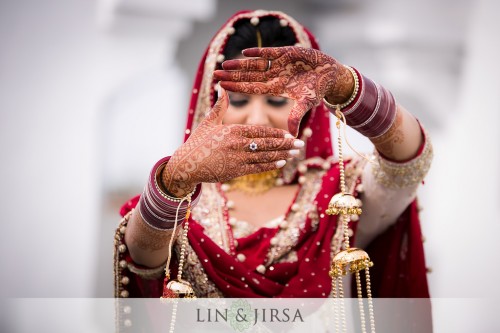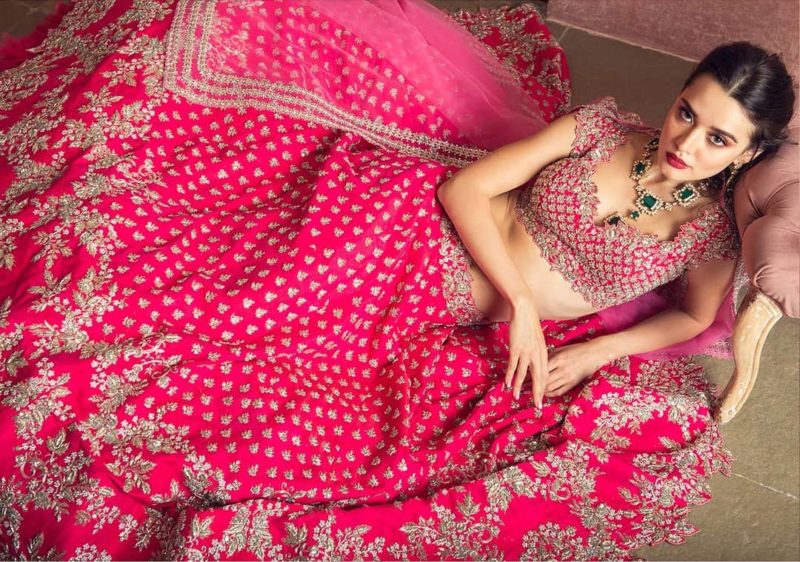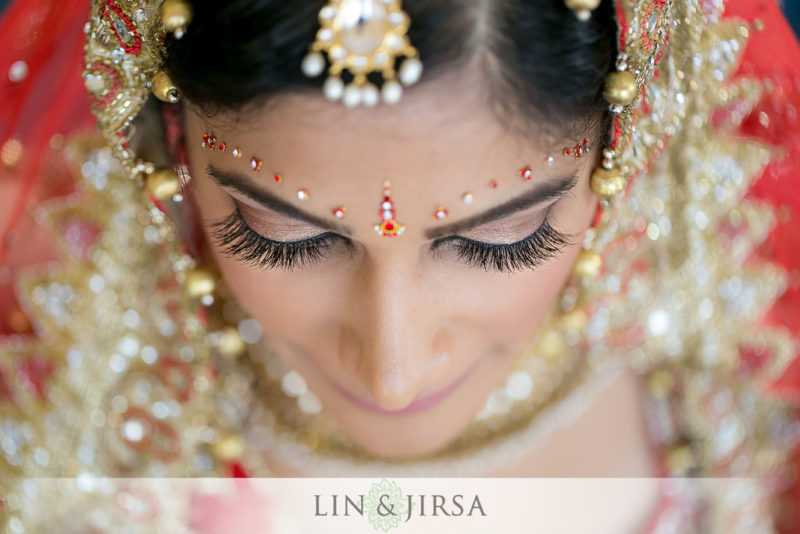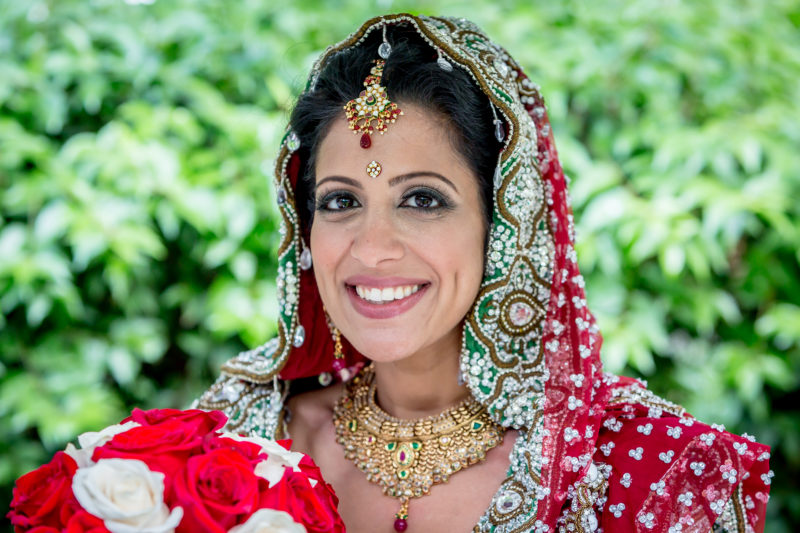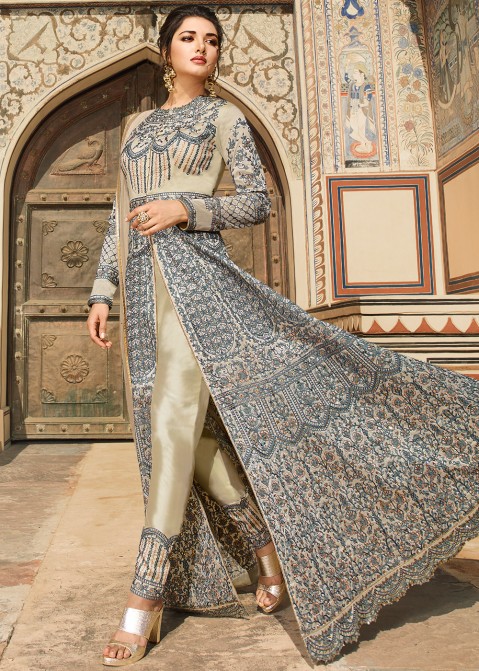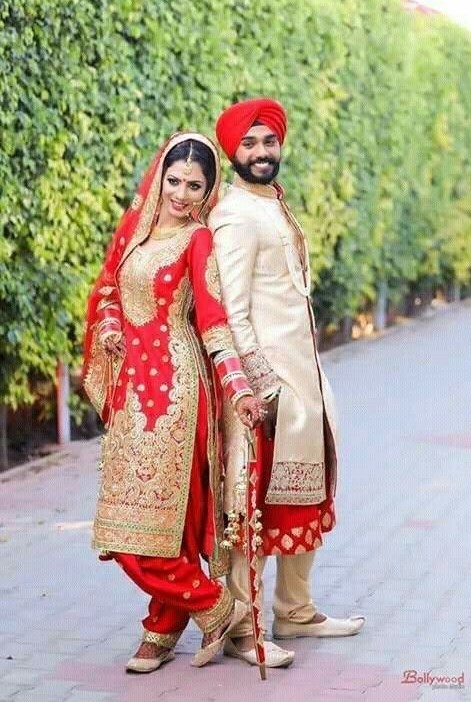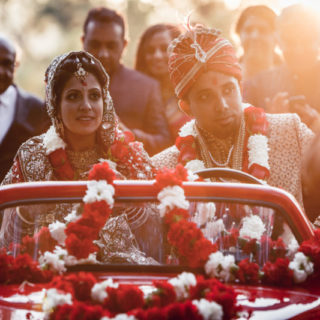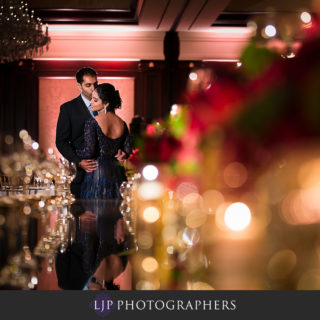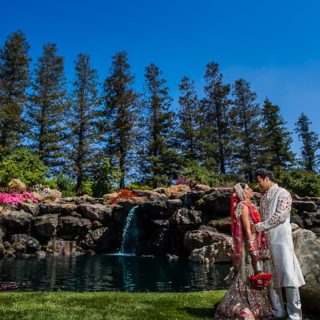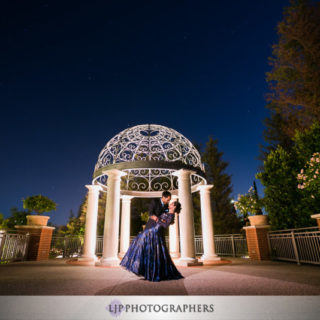Indian Bridal Outfit
The most memorable part of an Indian wedding’s is witnessing the beauty and elegance of the Bride on her special day. With all the glitz and glamour going on around her, the Bride maintains to be the central focal point of the wedding day. The Bridal Saree or Lengha is ornamented with embroidery and intricate designs, making for an eye-catching and exquisite piece of work. Various regions in India require the Bride to wear certain jewelry or wrap her saree in a specific manner. It is common for Bride’s to place Bindi’s, circular red and/or white stickers, above the eyebrows, however, the area between the eyebrows remains empty until the ceremony; the Groom places Sindhoor, red vermilion, here during the wedding ceremony. Besides her outfit and jewelry, the Bride has her hands and feet decorated in Mendhi, completing a head to toe transformation for her wedding day.
In Gujurati weddings, Brides typically wear a Saree however it is tied with the ‘Palav’, the rest of the Saree material that isn’t wrapped around the Brides’s waist, facing the front. South Indians, on the other hand, wear a different type of Saree made of silk material with gold bordered lining, a more traitional take on Bridal wear.
